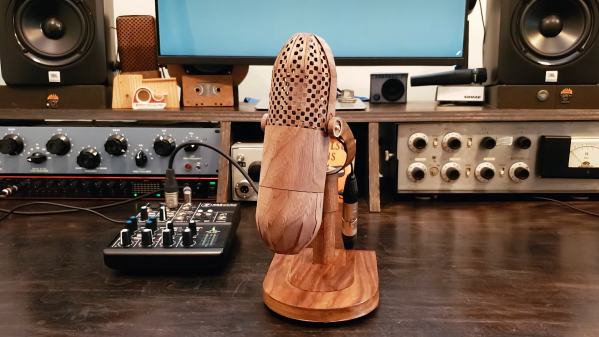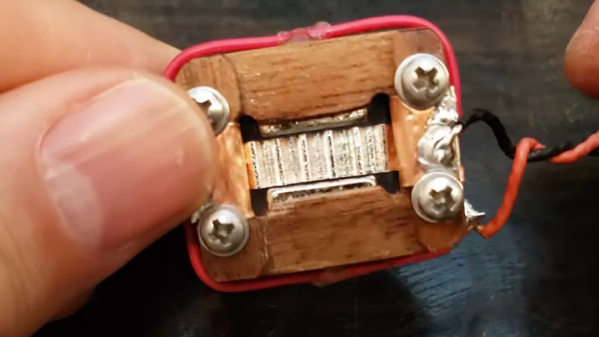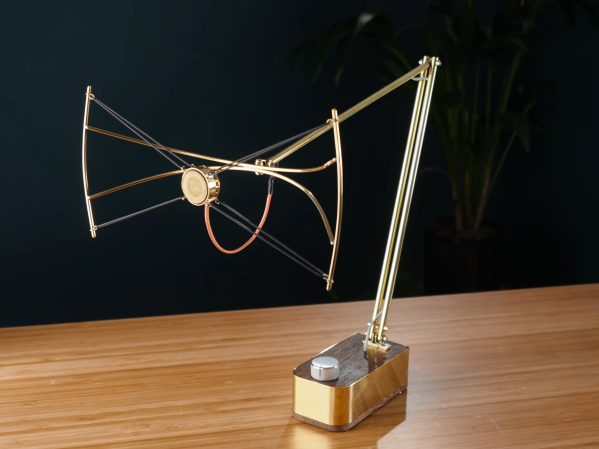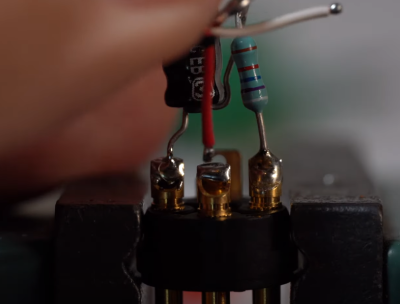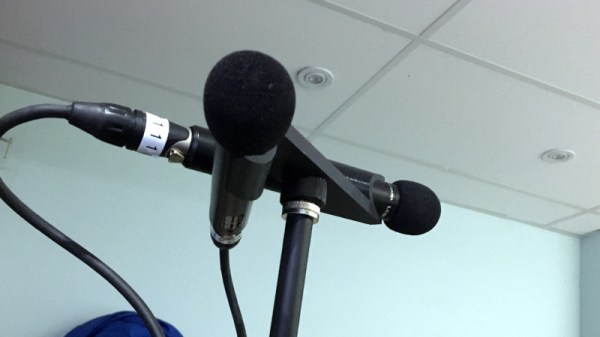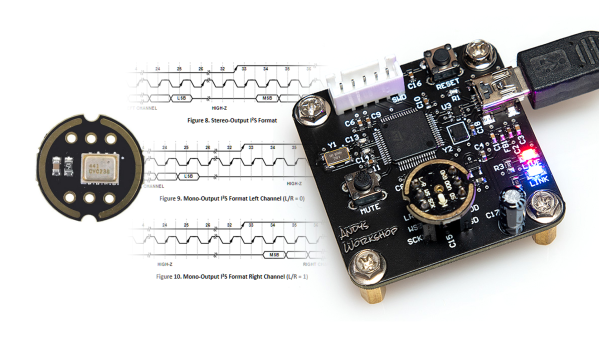It used to be that when we featured one of [Frank Olson]’s DIY ribbon microphone builds, it was natural to focus on the fact that he was building them almost exclusively from wood. But despite how counterintuitive it may seem, and for as many comments as we get that his microphones shouldn’t work without metal in the ribbon motors, microphones like this wooden RCA Model 77 reproduction both look and sound great.
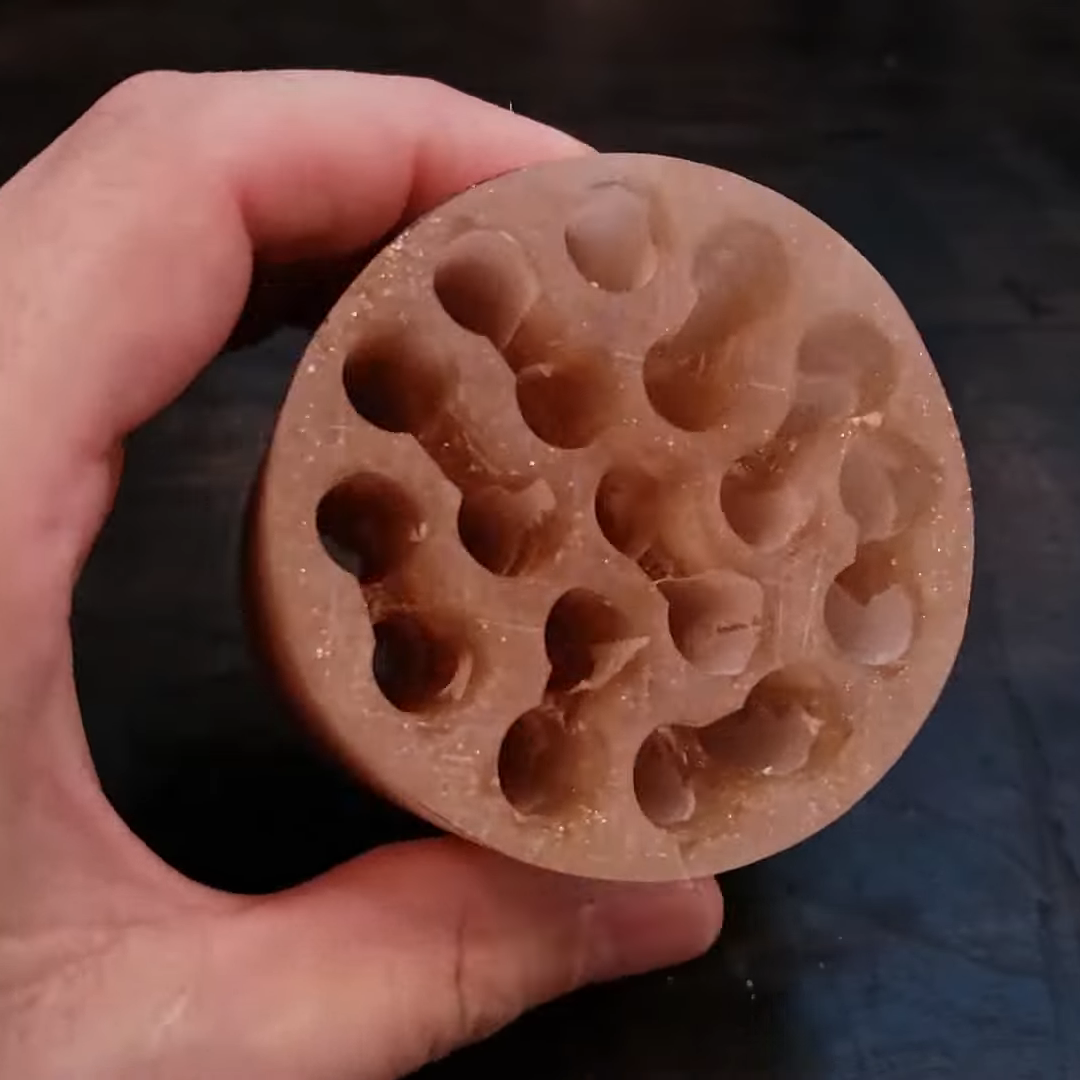 But ironically, this homage features a critical piece that’s actually not made of wood. The 77’s pickup pattern was cardioid, making for a directional mic that picked up sound best from the front, thanks to an acoustic labyrinth that increased the path length for incoming sound waves. [Frank]’s labyrinth was made from epoxy resin poured into a mold made from heavy paper, creating a cylinder with multiple parallel tunnels. The tops and bottoms of adjacent tunnels were connected together, creating an acoustic path over a meter long. The ribbon motor, as close to a duplicate of the original as possible using wood, sits atop the labyrinth block’s output underneath a wood veneer shell that does its best to imitate the classic pill-shaped windscreen of the original. The video below, which of course was narrated using the mic, shows its construction in detail.
But ironically, this homage features a critical piece that’s actually not made of wood. The 77’s pickup pattern was cardioid, making for a directional mic that picked up sound best from the front, thanks to an acoustic labyrinth that increased the path length for incoming sound waves. [Frank]’s labyrinth was made from epoxy resin poured into a mold made from heavy paper, creating a cylinder with multiple parallel tunnels. The tops and bottoms of adjacent tunnels were connected together, creating an acoustic path over a meter long. The ribbon motor, as close to a duplicate of the original as possible using wood, sits atop the labyrinth block’s output underneath a wood veneer shell that does its best to imitate the classic pill-shaped windscreen of the original. The video below, which of course was narrated using the mic, shows its construction in detail.
If you want to check out [Frank]’s other wooden microphones, and you should, check out the beautiful Model 44 replica that looks ready for [Sinatra], or the Bk-5-like mics he whipped up for drum kit recording.
Continue reading “Falling Down The Labyrinth With Wooden Microphone Design”

